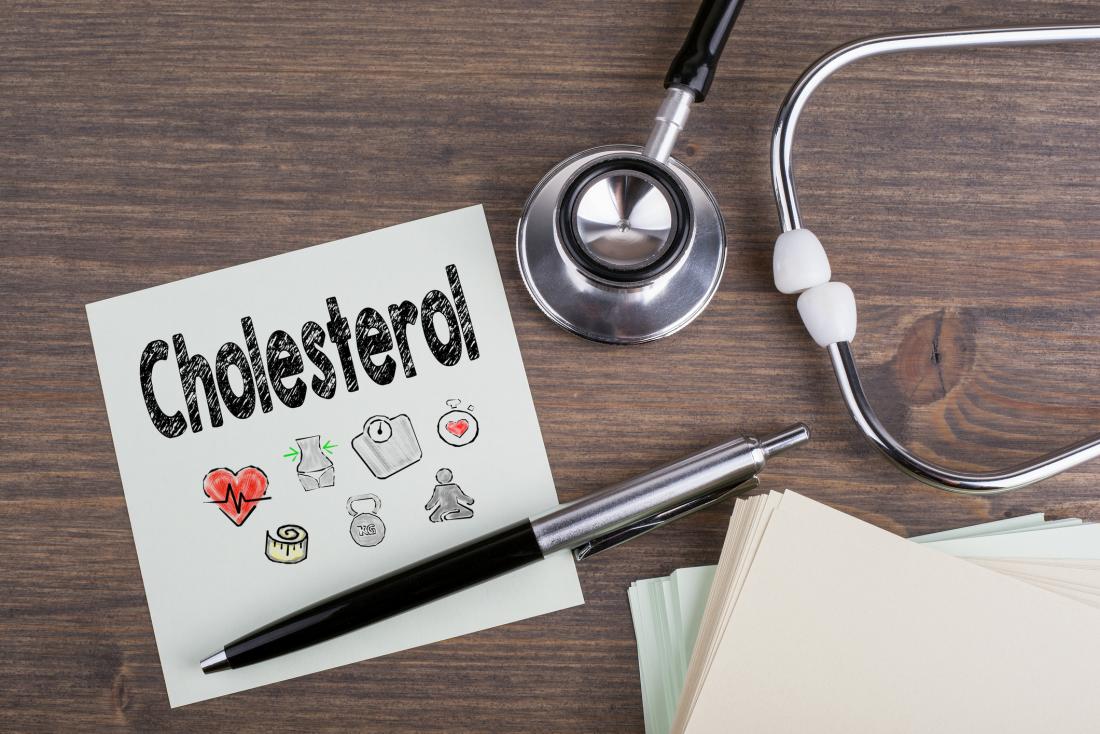By Frangiska Mylona,
When the time comes that someone needs to do their regular check-up including laboratory blood tests, their fear, and dread usually focus on the high levels of molecules like the so-called “bad” and “good” cholesterol, triacylglycerols, blood sugar, and other “horrible” molecules. Especially when it comes to cholesterol, because of its poor reputation, people believe that is a substance that can cause an internal somatic disaster and they primarily associate it with cardiac diseases, atherosclerosis, and severe damage. However, must be understood that this substance is vital in order for the human body to function well.
Having numerous functions, cholesterol is by definition a steroid alcohol molecule characteristic of animal tissues. There are many sources for obtaining cholesterol, from our everyday nutrition such as in red meat, full-fat dairy products like butter, fried foods, and oil, to the body’s own (de novo) production, which is performed by virtually all human tissues with the largest amounts being produced by the liver, adrenal cortex, intestines and reproductive organs such as the ovaries, testes, and placenta.
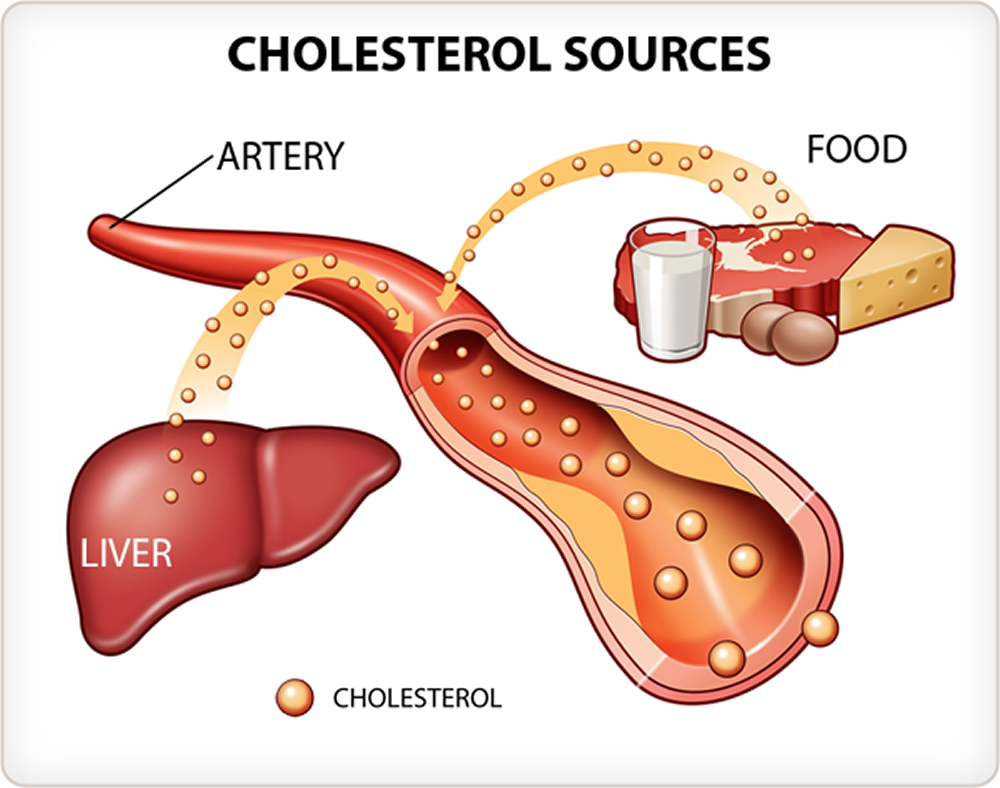
Cholesterol is a precursor molecule for all the classes of steroid hormones which are the corticosteroids (including the classes of glucocorticoids and mineralocorticoids) as well as the sex hormones such as androgens, progestins, and estrogens. As a result, it is evident that it is required for normal sexual maturation, in that, with the help of the adrenal cortex, ovaries, testes, and placenta, it produces the sexual hormones that are necessary for the body’s normal reproductive functions. Apart from them, in the mineralocorticoids class, the aldosterone hormone is included. Its main function is to regulate blood pressure, in conjunction with the kidneys. One of the main glucocorticoids is cortisol, which plays an active role in the body’s response to stress, and immune and inflammatory responses. Besides the synthesis of steroid hormones, cholesterol plays an integral role in the structure and fluidity of the cell membrane, in the production of bile acids, and in the synthesis of vitamin D.
Diving into the world of the cell, endogenous cholesterol will be found to be synthesized into the cell’s cytoplasm with the aid of cytosolic enzymes and enzymes from the smooth endoplasmic reticulum. One of the most important enzymes in cholesterol synthesis is the HMG CoA (3–hydroxy–3-methyl glutaryl coenzyme A) reductase that regulates the production of Mevalonate where this reaction is characterized as the rate-limiting step in cholesterol synthesis. Although the role of this enzyme is to regulate, it is also subjected to regulation. The gene that is responsible for its production is controlled by a transcription factor called SREBP–2. The function of the transcription factor is to initiate and control the transcription of genes. In the presence of low levels of sterol, they increase the production of HMG CoA reductase and consequently cholesterol production. Conversely, they inhibit the synthesis of HMG CoA reductase (and therefore the synthesis of cholesterol) when they detect high levels of sterol in the body. Therefore, the regulation of cholesterol synthesis is controlled by a negative feedback mechanism, where the lower levels of intracellular cholesterol will induce its production while its higher levels will inhibit it. HMG CoA reductase is also influenced by certain hormones. In the presence of elevated insulin levels, the synthesis of HMG CoA reductase may also be favored, resulting in more cholesterol production. On the other hand, when glucagon is synthesized the opposite result is observed.
By gaining a better understanding of this critical enzyme, science made some major discoveries regarding the therapy towards lowering cholesterol levels and thus decreasing the risk for atherosclerosis. An exemplary case is the revolutionary drugs known as statins. Statins mimic structurally the HMG CoA reductase enzyme but they act as its inhibitors resulting in a decreased production of cholesterol and lowering its plasma levels. Drugs like these are used to treat familial hypercholesterolemia, a disease that causes an abnormal build-up of cholesterol in the blood vessels, increasing the risk of atherosclerosis and subsequently cardiovascular diseases.
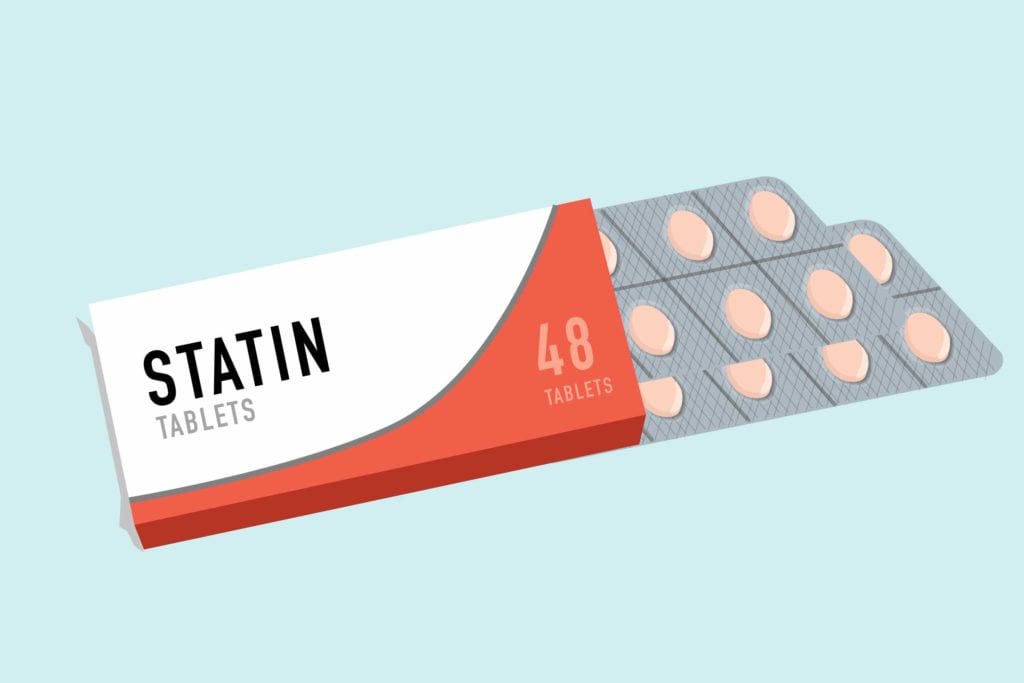
Like every molecule in our body, cholesterol needs to be degraded and eventually eliminated. This may seem like an easy process, but it is, actually, a complex one involving the liver primarily. The unmodified cholesterol will be eliminated into bile or converted from bile acids into bile salts, passing through the duodenum and finally secreted into the intestines. At that moment, cholesterol will follow two intersecting pathways. The first includes the secreted bile salts to be reabsorbed and reused by the intestine. Specifically, the ileum (the final part of the small intestine) reabsorbs the bile salts and actively transports them into the portal blood which will eventually be taken up again by the liver. At that point of reuptake, the second pathway is initiated, where a very small amount of bile salts will be lost and excreted in the feces.
In discussing cholesterol’s fate, the most interesting part is its transportation in the blood and to the target tissues. It is critical to understand that cholesterol is mostly a hydrophobic molecule, meaning it is not dissolved in water or blood, and therefore in order to be transported and to be kept in its soluble state, it needs its own “carriers” known as lipoproteins.
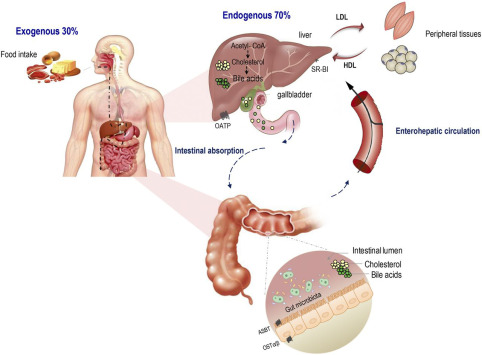
Lipoproteins are complexes formed by an inner core composed of lipids such as triacylglycerols and cholesterol esters that are surrounded by a protein shell formed by specific types of proteins known as apolipoproteins, phospholipids, and free (non-esterified) cholesterol. These complexes are classified based on their density where lipids are less dense than proteins meaning that the more dense complexes have less amount of lipids. Each lipoprotein is made of different apolipoproteins that act as “tags” directing each lipoprotein’s destination and function.
The types of lipoproteins are the following:
- Chylomicrons; are produced in the intestines and contain the highest amount of triacylglycerol and the lowest amount of cholesterol. Their function is to deliver dietary or exogenous triacylglycerols to the peripheral tissues.
- VLDL (Very Low-Density Lipoprotein); is formed by the liver and consists of a high amount of triacylglycerol and low cholesterol. Its function is to deliver endogenous triacylglycerols to the peripheral tissues. In terms of apolipoproteins, it contains the apo B–100 and obtains the apo C–II and apo E from HDL.
- LDL (Low-Density Lipoprotein); is formed from VLDL after a portion of its triacylglycerols has been lost. There are low amounts of triacylglycerols in it, while it contains the highest number of cholesterol and cholesterol esters. Its function is to deliver cholesterol to the peripheral tissues and to the liver. ApoB–100 is a significant component of its apolipoprotein complexes.
- HDL (High-Density Lipoprotein); is produced in the liver and intestines and consists of the lowest triacylglycerols amounts and has a high portion of cholesterol. Its function is to deliver cholesterol from the periphery to the liver for elimination. As far as the apolipoproteins are concerned it is made from apo A-1 and it is also the reservoir for apo C–II and apo E which are transferred from the VLDL.
To combine all of the complexes mentioned above, it is necessary to start from the beginning of the cholesterol’s ”journey”. Firstly, the intestines absorb dietary cholesterol and combine it with chylomicrons. Chylomicrons carry these dietary products to the peripheral cells. Later, these substances, as well as triacylglycerols and endogenous cholesterol, will be packed into the lipoprotein VLDL. VLDL passes through the bloodstream and delivers triacylglycerols to tissues like muscles and adipose tissue (also known as fat tissue). This loss of the triacylglycerol leads to the formation of LDL and some VLDL remnants referred to as IDL (intermediate density lipoproteins) that are usually taken up by the cells. The LDL is taken up by the peripheral cells via the LDLR (LDL receptor), where the cholesterol is consumed by the peripheral tissues.
The remained unused cholesterol molecules will be exported from the cells via the HDL complex. It has already been mentioned that HDL returns cholesterol to the liver where the bile will be produced and transferred to the intestines where it will either be recycled by the liver or excreted through the feces. From all of the above, it is concluded that the lipoprotein complexes are the components of a big “exchange” process between cholesterol, apolipoprotein, and triacylglycerols that need to be regulated and controlled in order for the molecule to be circulated and used correctly.
This is the point at which the terms “bad” and “good” cholesterol are understood. Observing the routes where cholesterol is transported through the body tissues, it is apparent that LDL carries a higher amount of cholesterol than HDL which removes it from the periphery back to the liver. Therefore, it is fitting to name LDL as the “bad” cholesterol and HDL as the “good” cholesterol.
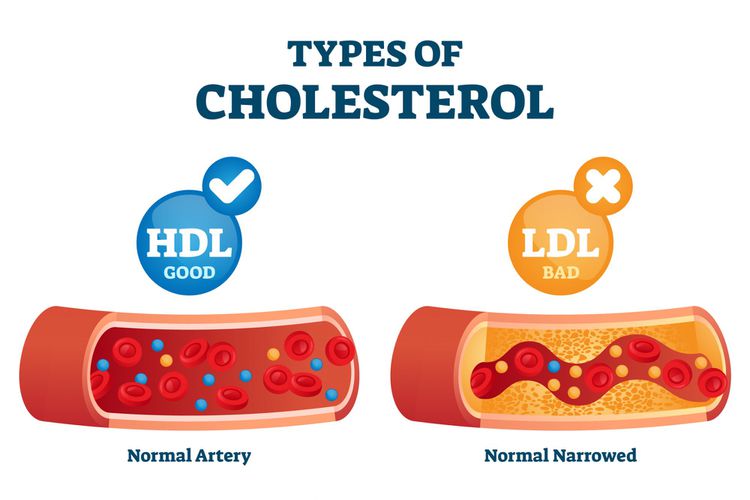
Cholesterol has also a “negative side”. People tend to know more about its gloomy effects and they neglect its importance to the human body. However, as was already discussed, the deposition of cholesterol in high amounts can lead to the formation of atherosclerotic plaque that narrows the blood vessels of body organs such as the heart and the cerebral cortex leading to life-threatening or even fatal outcomes. This result is attributed to two major factors including the;
- The lifestyle of the patient, such as lack of exercise, smoking, anxiety, and an imbalanced diet, has a higher risk of causing cardiovascular disorders associated with cholesterol deposition and atherosclerosis. A healthier lifestyle and reducing (or even eliminating) risk factors such as smoking and fast food intake will lead to a better prognosis.
- Genetic factors: there are genetic problems that can result in the formation of early atherosclerosis in patients that suffer from it. A well-known and common example is the autosomal dominant disease known as familial hypercholesterolemia. This is the result of a mutation in a gene responsible for the production of the LDLR receptor that can be very dangerous and even fatal.
Fortunately, modern medicine has developed an understanding of the nature of cholesterol’s production and transportation and has evolved many therapeutic mechanisms. Apart from reducing the risk factors, there are three categories of substances (and drugs) that decrease cholesterol levels:
- Inhibitors of the endogenous production of cholesterol such as the already mentioned statins.
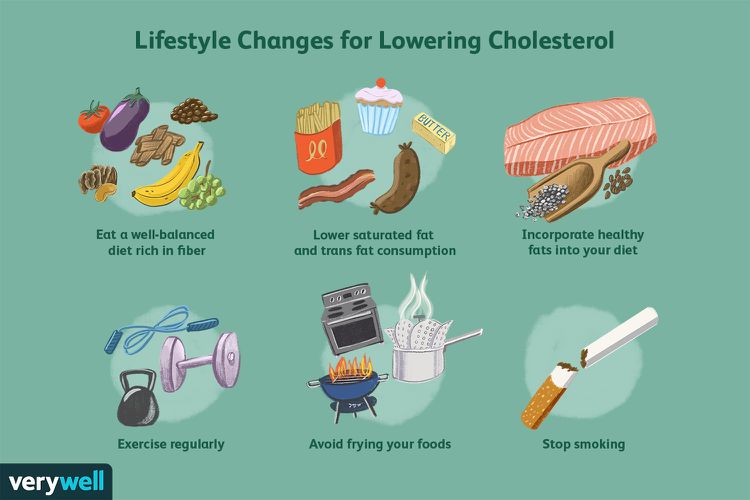
- Inhibitors of the absorption of dietary cholesterol. Earlier it was referred that cholesterol is the major sterol found in animal tissues. However, plants tend to use other sterol compounds like the β–sitosterol which is poorly absorbed from the human intestinal cells (enterocytes). It is studied that the intestinal absorption of dietary cholesterol is reduced when combined simultaneously with the intestinal absorption of plant sterols. As a result, a dietary treatment against hypercholesterolemia with daily consumption of plant steroid esters (like margarine) was developed to reduce cholesterol levels.
- Inhibitors of bile reuptake.
In conclusion, the “fear” of cholesterol should be eliminated because it is of crucial importance for the human body. Even so, adopting a healthier lifestyle especially when it comes to dietary cholesterol uptake, is recommended in order to live a healthy, full, and long life.
References
- Lippincott’s Illustrated Reviews: Biochemistry, Fifth edition by Richard Harvey and Denise Ferrier
- Cholesterol Metabolism, LDL, HDL and other Lipoproteins, Animation. YouTube.com. Available here

